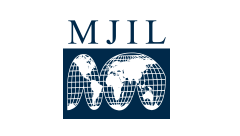Abstract
Part II of this paper will chart the historical background of the process that led up to the cease-fire and elections agreement. Part III will study various international instruments which guarantee the right to free and fair elections in order to determine the contours of the right as it exists today. In Part IV, this paper will look at the existing academic literature to give a more complete understanding of the requirements for a free and fair election. Part V of the paper will apply these standards to the elections in Cambodia and conclude that they were, in fact, free and fair. Part VI will present the lessons of the Cambodian elections. First, it will discuss how the Cambodia mission has changed our understanding of the criteria for determining whether the United Nations should involve itself in the elections of an independent country. It will also present the lessons of the Cambodia mission with respect to the way electoral missions should be conducted.
Recommended Citation
Nhan T. Vu,
The Holding of Free and Fair Elections in Cambodia: The Achievement of the United Nations' Impossible Mission,
16
Mich. J. Int'l L.
1177
(1995).
Available at:
https://repository.law.umich.edu/mjil/vol16/iss4/4

